Analysis
Steady but Uneven Sales at the 6th Edition of Masterpiece London
Much-hyped pieces by Warhol and Monet hadn’t sold by the end of the second day.
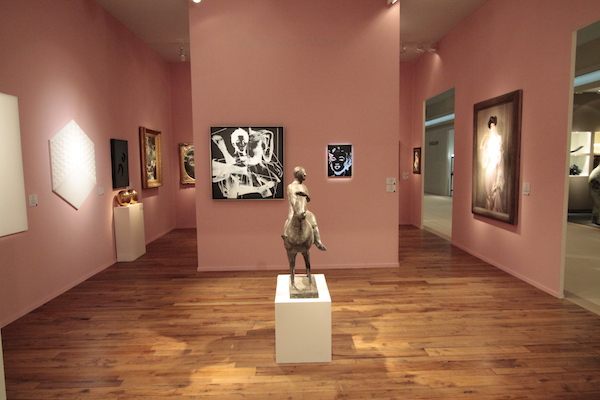
Photo: Courtesy Robilant+Voena
Much-hyped pieces by Warhol and Monet hadn’t sold by the end of the second day.

Lorena Muñoz-Alonso

As far as first impressions go, arriving to Masterpiece in a golf buggy across Ranelagh Gardens by the river Thames pretty much summed up what laid ahead: Luxury, class, and sophistication abound in this art and antiques art fair, now in its 6th edition.
Described by some insiders as the “forerunner of Frieze Masters,” due to its tranquil and sophisticated atmosphere and decadent mix of modern art and antiquities, the fair, however, seems to have more similarities with fairs like PAD London and TEFAF in Maastricht.
Now firmly established in London’s arts calendar, Masterpiece has a marked international accent, gathering over 150 galleries from all over the world. Its reputation is certainly going from strength to strength, as are visitor and sales figures.
And yet, by the second day of this year’s edition, sales seemed to be happening in uneven fashion, with some dealers describing a frenzy of purchases in the first hours, while other blue chip pieces, like the much hyped unseen Andy Warhol available at the Indianapolis-based Long-Sharp Gallery, was still unsold at the beginning of the third day.
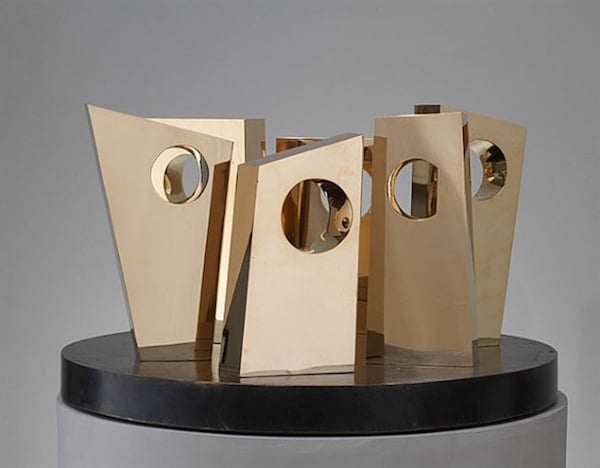
Barbara Hepworth’s Six Forms on a Circle (1967), available at the gallery Osborne Samuel for £400,000 ($630,000)
Photo: Courtesy Osborne Samuel
“Frieze Masters is a great fair to be seen, but in terms of sales Masterpiece is superb,” beamed Peter Osborne, from the London-based gallery Osborne Samuel. He had reasons to be happy. On the day after the preview, the gallery, which brought a top notch selection of works by English artists like Henry Moore, Barbara Hepworth, and Lynn Chadwick among others, had sold a number of important pieces, including two small bronzes by Moore for £350,000 ($550,000) and £75,000 ($118,000, and another bronze sculpture by Chadwick for £150,000 ($235,000).
A superb sculpture by Hepworth, entitled Six Forms on a Circle (1967) and sporting a £400,000 ($630,000) price tag, however, hadn’t sold by Thursday afternoon. But it’d be surprising if such a splendid piece by an artist who is currently the subject of major retrospective at Tate Modern doesn’t find a new owner before the end of the fair next Wednesday.
Likewise, the two fantastic Claude Monet pastels (one of them hiding a rare drawing by the artist fastened to its back) that were on sale at Richard Green gallery for a combined total of £1.4 million ($2.3 million), hadn’t sold by Thursday morning, despite the avalanche of press coverage reporting on the amazing discovery.
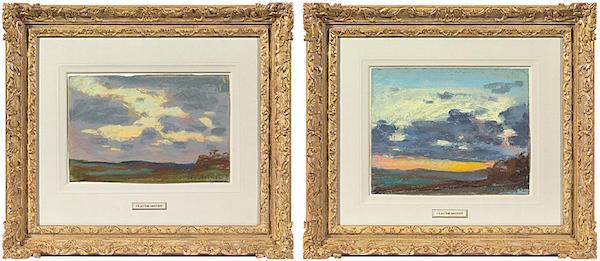
The pastels by Claude Monet bought by dealer Jonathan Green at auction
Photo via: Richard Green gallery
Equally surprising was the fail to sale of the dazzling explosion of roses, tulips, and narcissus painted by Jan Brueghel the Elder circa 1607 and titled Still life with flowers in a stone ware vase. Glistening in the walls of the Richard Green booth, the still life had reportedly received a number of “serious offers” during the preview. But with its £3.5 million ($5.5 million) price tag, it is a purchase that demands as much reflection and commitment as deep pockets.
Still at Richard Green’s, two paintings by Laurence Stephen Lowry did find new owners during preview day. Lowry’s Sea Mist (1964) sold for £275,000 ($430,000), while the larger Industrial Landscape (1958) changed hands for an undisclosed quantity over £500,000 ($785,000).
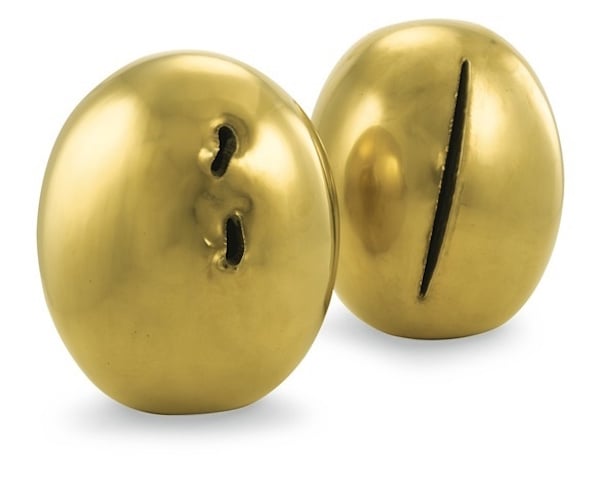
Lucio Fontana’s Concetto spaziale, Natura (1967) sold for around €180,000 ($200,000)
Photo: Courtesy Robilant+Voena
Meanwhile, at the booth of Robilant+Voena, director Mira Dimitrova was positively elated. “This year sales are being absolutely fantastic, it is probably our best year at the fair, of the five we have participated,” she enthused.
A millionaire sale of an Italian old master was being confirmed by Thursday afternoon, while a number of pieces had already sold. A Paolo Scheggi’s sculptural canvas Zone Riflesse (1965) went to a new owner for around €700,000 ($781,000), while a sculpture by Lucio Fontana, Concetto spaziale, Natura (1967), sold for a price in the region of €180,000 ($200,000).
Italian artists were also in demand at the booth of London-based gallery Mazzoleni Art. By Thursday, a cellotex by Alberto Burri has sold for £300,000 ($472,000), while a 1960s painting by Agostino Bonalumi changed hands for £400,000 ($630,000).
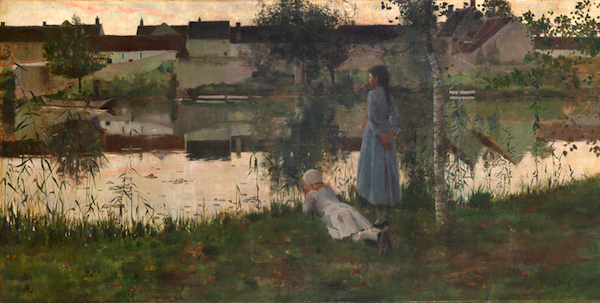
William Stott, Le Passeur
Photo: Courtesy The Fine Art Society
Over at the Fine Art Society, things were looking peachy too. A 1912 self-portrait by Adrian Paul Allinson sold for £38,000 ($60,000), as did a 1900 wooden table by English architect and designer Charles Francis Annesley Voysey, worth £85,000 ($134,000). Meanwhile, a large painting by William Stott, entitled Le Passeur, had been put on reserve for a whopping £2.2 million ($3.5 million).
Jewelry is also a staple at the fair, with many collectors attending specifically to snatch up the most luxurious wearable items imaginable. London jewelers Symbolic & Chase, for example, sold a diamond and ruby cuff by Boucheron for a seven figure sum, while Carter Marsh & Co sold over £8 million ($12 million) worth of clocks, including the Medici Tompion (1696) for £4.5 million ($7 million), in just a few hours.
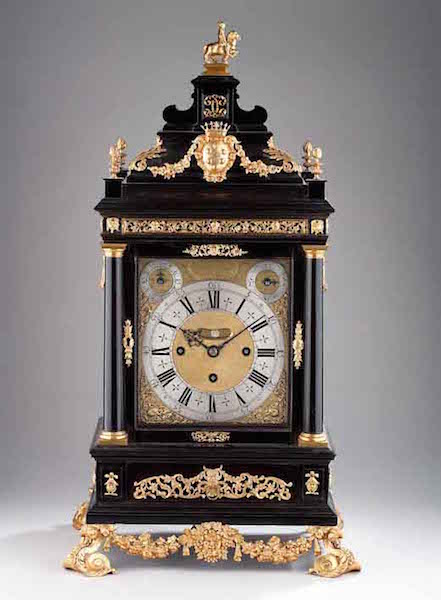
The Medici Tompion clock (1696) sold at Carter Marsh & Co for £4.5 million ($7 million)
Photo via: Antiques Trade Gazette
“Masterpiece is a luxury goods fair, mixing art with jewelry and design,” dealer Peter Osborne told artnet News. And the fair, located right on the border between Chelsea and Pimlico, where the best antiquaries in the city are based, seems to cleverly capitalize on the prime location.
“The dates of the fair are also fantastic,” Obsorne added. “Many international collectors are stopping in London after Art Basel, and the fair is sandwiched between the impressionist and modern, and the contemporary auctions.”
London, showing its most benign and summery face, is no doubt bustling with collectors this week. With the fair still open for another six days and benefiting from the long, mild days, it’d be interesting to see if Masterpiece can work its magic and turn the positive sales of some into a general slew of acquisitions for many.